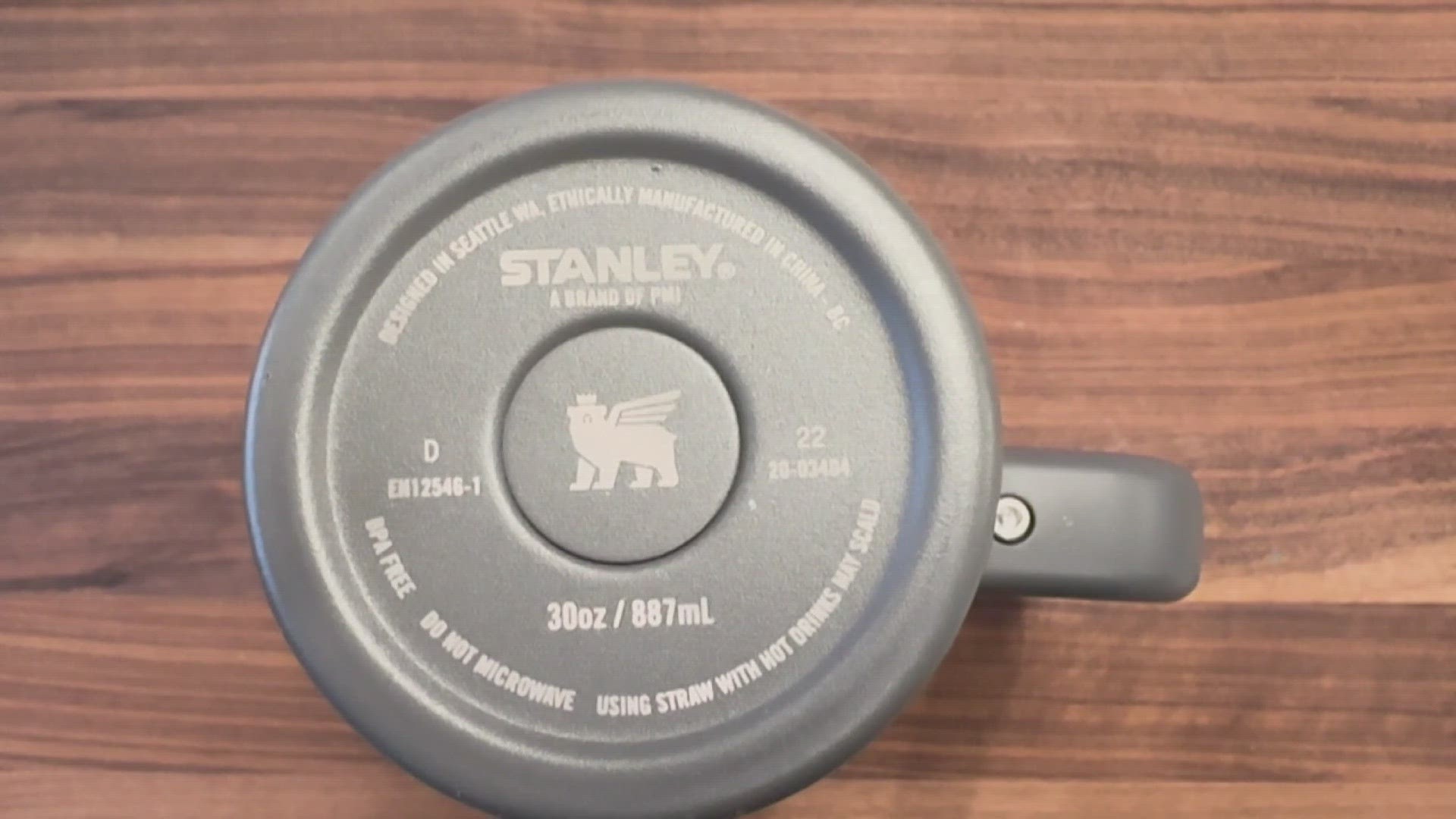GREENSBORO, N.C. — You've seen all the posts about lead being in the Stanley Cups. Here's what Consumer Reports found after a longtime lead poisoning prevention activist and CR partner did testing. Tamara Rubin from Lead Safe Mama guides consumers through the hype.
"Using XRF technology, Lead Safe Mama discovered that the exposed sealing dot on the bottom of the Stanley Tumblers was positive for a very high level of lead. On the bottom of the Stanley Tumblers there is a little button, and underneath that is a primarily leaded material and Stanley melts that bit of lead into the hole on the bottom of the tumbler to create the vacuum insulation," said Tamara Rubin, Lead Safe Mama.
According to Tamara, countless consumers have contacted Lead Safe Mama, and let them know that their little button of stainless steel with the logo has fallen off and that they were not aware that there was a hunk of bioavailable lead.
Lead exposure can cause developmental problems, affect brain development, and lead to lower IQ.
Stanley’s website discloses that its sealing material does include some lead. And Stanley isn’t alone—many similarly designed flasks and tumblers are manufactured the same way using lead solder.
On its website, Stanley tells its customers, “Rest assured that no lead is present on the surface of any Stanley product that comes into contact with the consumer nor the contents of the product.”
If you own a Stanley Quencher and the button on the bottom falls off, stop using it immediately and contact the company for a replacement. The company does offer a lifetime warranty.
If you’re worried that your child might have been exposed to the lead, talk to your doctor about a blood lead test.
If you own one of those Stanley Quenchers, make sure you’re keeping it clean. If they’re dishwasher-safe, that might be the best and easiest option. Otherwise, separate all parts of the tumbler and hand-wash with warm water and a mild detergent.

